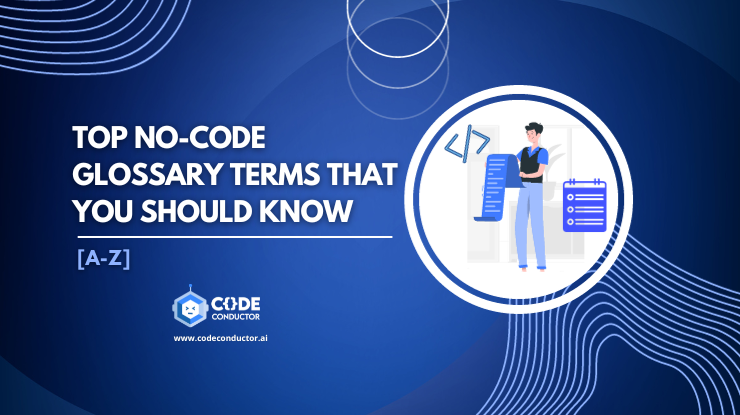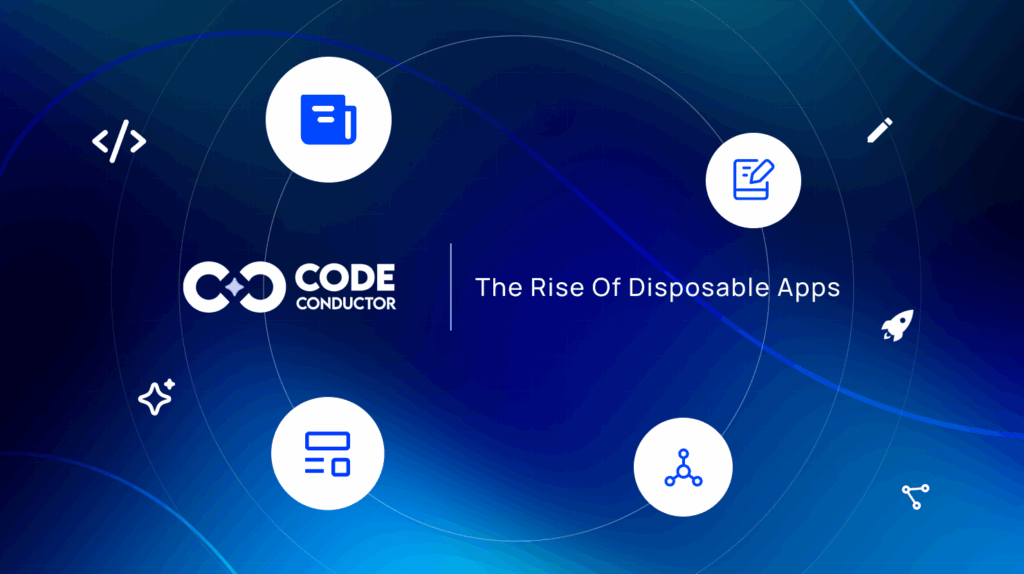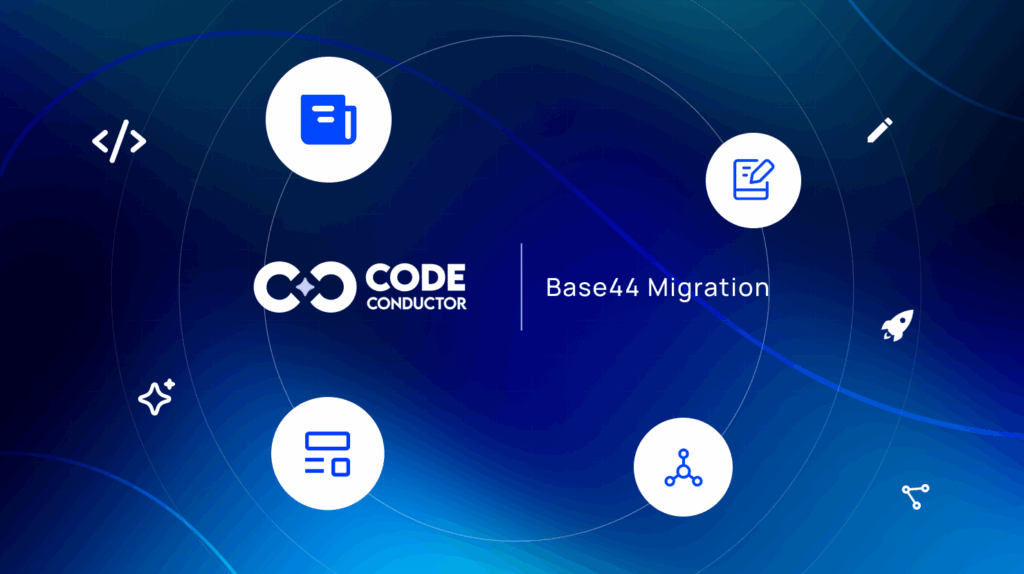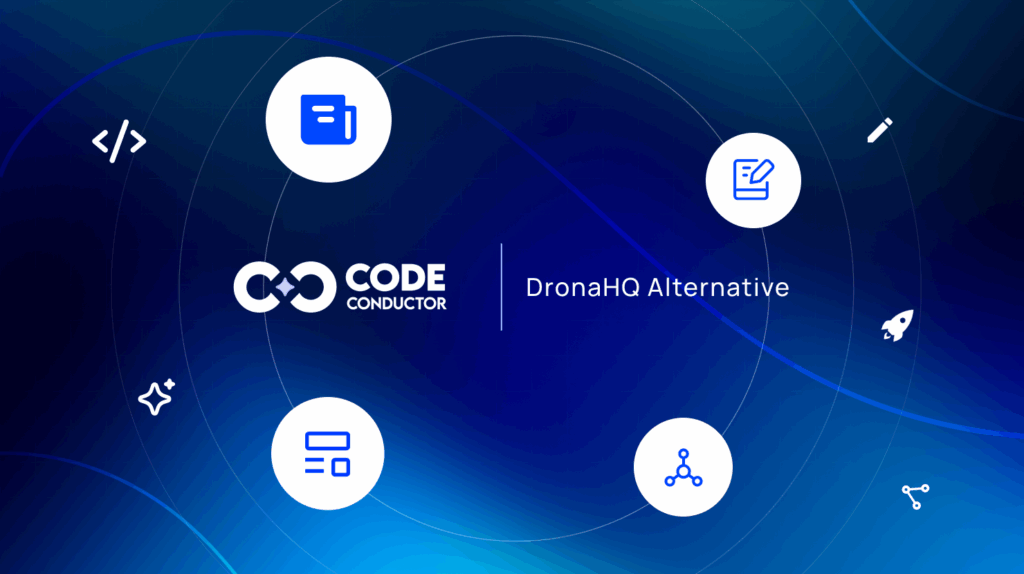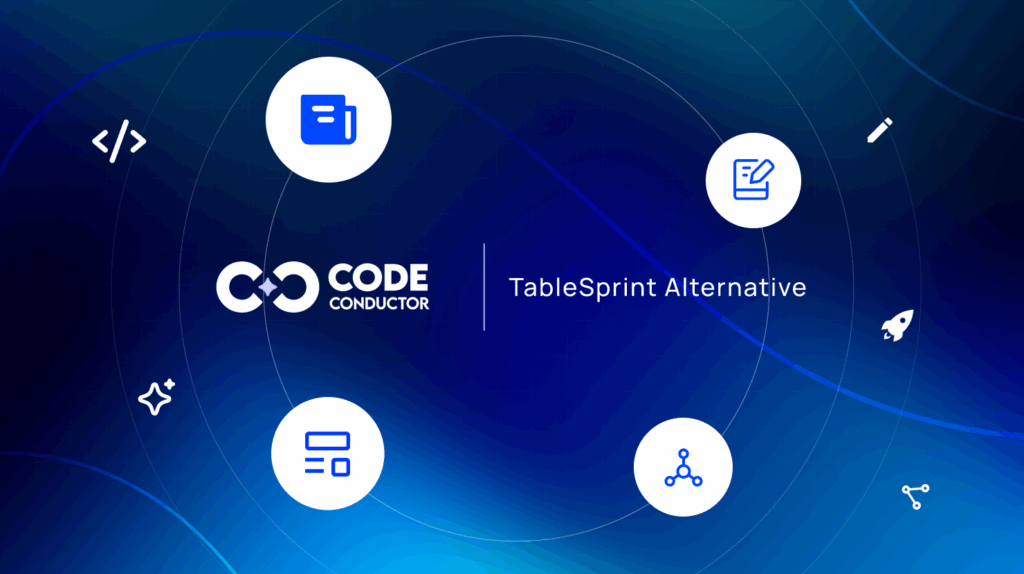In This Post
- List of Common No-Code Glossary Terms – Definitions [2024]
- 1. Accelerated Mobile Pages (AMP)
- 2. Anomaly Detection
- 3. API Gateway
- 4. API Integration
- 5. Artificial Intelligence (AI)
- 6. Automated Machine Learning (AutoML)
- 7. Authentication
- 8. Backend-as-a-Service (BaaS)
- 9. Business Process Automation (BPA)
- 10. Chatbots
- 11. Cloud Computing
- 12. Cloud Deployment
- 13. Computer Vision
- 14. Content Delivery Network (CDN)
- 15. Content Management System (CMS)
- 16. Customer Relationship Management (CRM)
- 17. Data Integration
- 18. Data Mining
- 19. Database/Database Software
- 20. Drag-and-Drop Interface
- 21. Facial Recognition
- 22. Graphical User Interface (GUI)
- 23. Low-Code Platforms
- 24. Machine Learning (ML)
- 25. Microservices
- 26. Mobile Optimization
- 27. Multi-Tenancy
- 28. Natural Language Processing (NLP)
- 29. Neural Networks
- 30. No-Code Community
- 31. Platform-as-a-Service (PaaS)
- 32. Predictive Analytics
- 33. Pre-built Templates
- 34. Real-Time Collaboration
- 35. Reinforcement Learning
- 36. Responsive Web Design
- 37. Robotic Process Automation (RPA)
- 38. SaaS (Software as a Service)
- 39. Sales Enablement Platforms
- 40. Search Engine Optimization (SEO)
- 41. Serverless Computing
- 42. Single Sign-On (SSO)
- 43. Software Development Kit (SDK)
- 44. Subscription Management Platform
- 45. User Experience (UX) Design
- 46. User Interface (UI) Design
- 47. Version Control
- 48. Voice Recognition
- 49. Web Analytics
- 50. Web Application Firewalls (WAF)
- 51. Web Development Frameworks
- 52. Web Hosting
- 53. Webhooks
- 54. White-Labeling
- 55. Workflows
- 56. Zapier
- 57. App Store Optimization
- 58. Influencer Partnerships
- 59. Push Notifications
- 60. In-App Navigation
- 61. Loyalty Programs
- 62. App Monetization
- 63. Form Builder
- 64. No-Code Marketplace
- 65. WYSIWYG Editor
- In The End!
List of Common No-Code Glossary Terms – Definitions [2024]
If you’re new to the game or just looking to brush up on your No-Code knowledge, you’re in the right place. From “Workflow Automation” to “Drag-and-Drop Interface” we’ll unravel the terminology that makes No-Code tick. These are the building blocks of your No-Code toolkit, and understanding them will open doors to a world of endless possibilities.
Through the Top 50+ No-Code Glossary Terms & Definitions, we will equip you with the essentials you need to thrive in this tech-savvy landscape. Let’s take a look at the following:
1. Accelerated Mobile Pages (AMP)
AMP is designed to quicken the load time of web pages on mobile gadgets. Some no-code solutions offer AMP support to boost mobile user experience.
2. Anomaly Detection
This AI method spots unusual patterns that stray from what’s expected. Certain no-code solutions incorporate this feature in their analytics offerings.
3. API Gateway
This server functions as the front-end for APIs, channeling API requests to the backend. It’s useful in no-code solutions for overseeing API interactions and broadening functionalities.
4. API Integration
This involves connecting disparate software applications via APIs. In the realm of no-code, this practice allows for the integration of third-party services, expanding the platform’s reach.
5. Artificial Intelligence (AI)
AI mimics human cognitive functions like learning and problem-solving. Some no-code solutions come with built-in AI tools for tasks such as data analysis and natural language understanding.
6. Automated Machine Learning (AutoML)
This automates the application of machine learning to solve real-world issues. In no-code environments, AutoML enables the deployment of machine learning models with little manual intervention.
7. Authentication
This confirms the identity of a user or a system. Various authentication techniques can be employed in no-code solutions to safeguard user information and limit access to specific features.
8. Backend-as-a-Service (BaaS)
This cloud service offers backend functionalities for mobile and web apps. It’s commonly paired with no-code solutions to manage backend tasks like database handling and user authentication.
9. Business Process Automation (BPA)
This involves using technology to automate intricate business processes. No-code solutions often feature tools that enable various forms of business process automation.
10. Chatbots
These are conversational agents driven by AI, designed to interact with users in a human-like manner. Many no-code solutions offer the ability to construct chatbots.
11. Cloud Computing
This technology delivers computational services over the internet. It serves as the backbone for many no-code solutions, allowing for easy deployment and scalability.
12. Cloud Deployment
This refers to the hosting of digital resources on cloud platforms. No-code solutions often operate in the cloud, making deployment and scaling effortless.
13. Computer Vision
This AI field trains machines to interpret visual data and make decisions based on it. Some advanced no-code solutions may offer computer vision features.
14. Content Delivery Network (CDN)
A CDN is a network of servers that deliver web content based on the user’s geographical location. Many no-code solutions utilize CDNs to ensure fast and reliable content delivery.
15. Content Management System (CMS)
A CMS allows for the easy creation and management of digital content. These systems often integrate well with no-code platforms.
16. Customer Relationship Management (CRM)
CRM software consolidates customer interactions and data. It can be paired with no-code solutions to offer a complete business toolkit.
17. Data Integration
This involves merging data from multiple sources into a single, unified view. No-code solutions often include features that facilitate data integration.
18. Data Mining
This is the practice of uncovering patterns in large sets of data. Some no-code solutions with AI capabilities offer data mining tools for extracting valuable insights.
19. Database/Database Software
These systems manage data storage and retrieval. In no-code environments, users can visually configure databases and perform complex queries.
20. Drag-and-Drop Interface
This user-friendly interface allows for the construction of applications by dragging and dropping elements. It’s a staple feature in many no-code solutions.
21. Facial Recognition
This biometric technology identifies or verifies individuals based on digital images. Some specialized no-code solutions may offer this capability.
22. Graphical User Interface (GUI)
This is the visual layer that users interact with in a software application. No-code solutions often feature intuitive GUIs, designed for ease of use.
23. Low-Code Platforms
These platforms require minimal coding and are often used for quick application development. They are akin to no-code platforms but offer more customization options.
24. Machine Learning (ML)
A subset of AI, ML enables systems to learn from data and improve over time. In no-code solutions, ML algorithms can be employed for tasks like data analysis and predictive modeling.
25. Microservices
These are small, loosely connected components of an application that can be deployed independently. They’re used in no-code solutions to build modular apps that are easier to manage.
26. Mobile Optimization
This involves tailoring websites or apps to display seamlessly on mobile devices. Many no-code solutions come with built-in mobile optimization features.
27. Multi-Tenancy
This architecture allows a single instance of software to serve multiple customers. It’s commonly used in no-code solutions for efficient resource utilization.
28. Natural Language Processing (NLP)
This AI field focuses on the interaction between computers and human language. In no-code solutions, NLP can be employed to create chatbots or analyze customer feedback.
29. Neural Networks
These algorithms are designed to recognize patterns and are modeled after the human brain. In no-code solutions, they can be used for complex tasks like image and speech recognition.
30. No-Code Community
The no-code community consists of a collective of passionate individuals and forward-thinking organizations dedicated to advancing the no-code movement. They share valuable resources, tutorials, and success stories, often collaborating to solve challenges and push the boundaries of what can be achieved with no-code tools. Check out the list of best No-code communities & forums 2024
31. Platform-as-a-Service (PaaS)
This cloud service provides a platform for developing, running, and managing applications. Some no-code solutions operate on a PaaS model.
32. Predictive Analytics
This involves using statistical algorithms to predict future outcomes based on past data. Some no-code solutions offer predictive analytics tools.
33. Pre-built Templates
These are pre-designed layouts or structures that serve as a foundation for development projects. They streamline the creation process by offering users a predefined framework or a set of functionalities that can be further customized to suit specific needs. Explore the list of top 11 No-code Platforms with pre-built templates.
34. Real-Time Collaboration
This feature enables multiple users to work on a project at the same time. Many no-code solutions offer real-time collaboration capabilities.
35. Reinforcement Learning
This type of machine learning involves an agent learning to make decisions through interaction with an environment. Some advanced no-code solutions may offer this feature.
36. Responsive Web Design
This design approach ensures that websites and apps adapt to various screen sizes. Most no-code solutions come with built-in responsive design features.
37. Robotic Process Automation (RPA)
This involves using software robots to automate repetitive tasks. It aligns well with the no-code objective of streamlining processes.
38. SaaS (Software as a Service)
This is a cloud-based model for accessing software applications via the internet. Many no-code solutions operate under this model.
39. Sales Enablement Platforms
These tools provide resources to sales teams to improve their efficiency. They can often be integrated with no-code solutions.
40. Search Engine Optimization (SEO)
This practice involves optimizing websites for better visibility in search engine results. Many no-code solutions offer built-in SEO tools.
41. Serverless Computing
In this cloud computing model, the cloud provider manages the server infrastructure. It’s commonly used in no-code solutions.
42. Single Sign-On (SSO)
This authentication process allows users to access multiple services with a single set of credentials. It’s often used in enterprise-level no-code solutions.
43. Software Development Kit (SDK)
This is a set of software tools used for developing applications for specific platforms. Some no-code solutions allow for the integration of SDKs.
44. Subscription Management Platform
This software manages the subscription billing cycle. It can often be integrated with no-code solutions to handle financial transactions.
45. User Experience (UX) Design
This is the practice of designing products that are easy and enjoyable to use. No-code solutions often come with built-in UX design components.
46. User Interface (UI) Design
This involves designing the visual elements that users interact with. No-code solutions often feature drag-and-drop interfaces for this purpose.
47. Version Control
This practice involves tracking and managing changes to software code. In no-code solutions, version control features allow users to revert to previous versions of their projects.
48. Voice Recognition
This technology converts spoken language into text. It can be integrated into no-code solutions to develop voice-responsive apps.
49. Web Analytics
These tools offer insights into website performance and user behavior. They can often be integrated into no-code solutions.
50. Web Application Firewalls (WAF)
These security systems protect web apps from various online threats. They’re often included in no-code solutions for added security.
51. Web Development Frameworks
These are sets of software libraries that help in the efficient development of web apps. While not directly related to no-code, they can inform choices when selecting a no-code platform.
52. Web Hosting
This service makes websites accessible on the internet by storing them on servers. Many no-code solutions include this as part of their offering.
53. Webhooks
These are used to send data between apps in real-time when specific events occur. They can be set up in no-code solutions for complex integrations.
54. White-Labeling
This practice involves rebranding a generic product to make it appear as if it was created by the purchaser. Many no-code solutions offer white-labeling options.
55. Workflows
In no-code solutions, workflows are automated sequences of tasks activated by specific triggers. They simplify complex processes.
56. Zapier
This online tool connects various apps and services. It’s often used to extend the capabilities of no-code solutions.
57. App Store Optimization
App Store Optimization (ASO) refers to the process of optimizing mobile apps to rank higher in app stores’ search results. The goal is to increase app visibility and drive more downloads. In the context of no-code platforms, ASO can often be managed through built-in features or integrations that help users optimize their app listings without needing to code.
58. Influencer Partnerships
Influencer Partnerships involve collaborating with influencers to promote a product or service. For no-code platforms, this could mean partnering with tech influencers to showcase the ease and utility of creating apps or websites without coding, thereby reaching a broader audience.
59. Push Notifications
Push Notifications are messages sent directly to a user’s device from an app. No-code platforms often offer easy-to-implement solutions for adding push notifications to apps, allowing users to engage their audience without writing any code.
In-App Navigation refers to the user interface elements that guide users through an app, such as menus, buttons, and links. No-code platforms often provide drag-and-drop features to easily design and implement in-app navigation.
61. Loyalty Programs
Loyalty Programs are structured marketing strategies designed to encourage customers to continue to use or purchase the services of a business. In a no-code context, these can often be built using pre-made templates or modules that require no coding skills.
62. App Monetization
App Monetization is the process of generating revenue through an app, often through advertisements, in-app purchases, or subscription models. No-code platforms may offer built-in features to help users implement various monetization strategies without coding.
63. Form Builder
A Form Builder is a tool that lets you create digital forms without requiring any coding skills. It’s a staple in many no-code platforms, making it easy for users to collect data, conduct surveys, or generate leads. The drag-and-drop interface usually makes the process straightforward and efficient.
64. No-Code Marketplace
This is essentially a digital storefront where you can find various pre-built applications, templates, and components designed for no-code platforms. It’s a hub where creators and businesses can buy, sell, or share resources that enhance the capabilities of their no-code projects.
65. WYSIWYG Editor
It stands for “What You See Is What You Get” this editor allows you to design web pages or apps in a way that directly shows the end result. It’s a common feature in no-code platforms, enabling users who don’t have coding experience to easily create visually appealing designs.
In The End!
We conclude some basic No-Code Glossary Terms. It’s true that the world of no-code development is a vibrant, rapidly evolving tool filled with innovation and limitless potential. If we missed any key term of no-code, you can contact us to update or let us know.
Do you want to start with no-code? Here is our beginner’s guide to No-Code.
But if you’re looking for a comprehensive, all-in-one solution to build websites and mobile applications in just a few seconds? CodeConductor is the solution. With a user-friendly interface, powerful automation, and a supportive community, CodeConductor can take your projects to the next level. Try it today!

Founder CodeConductor

